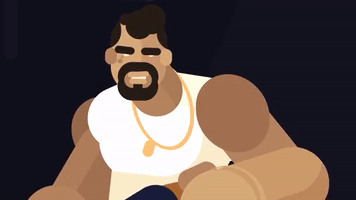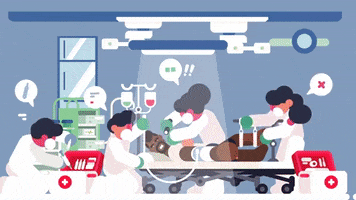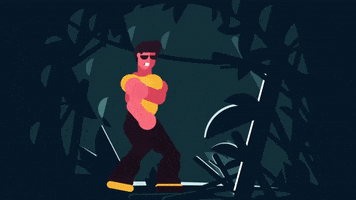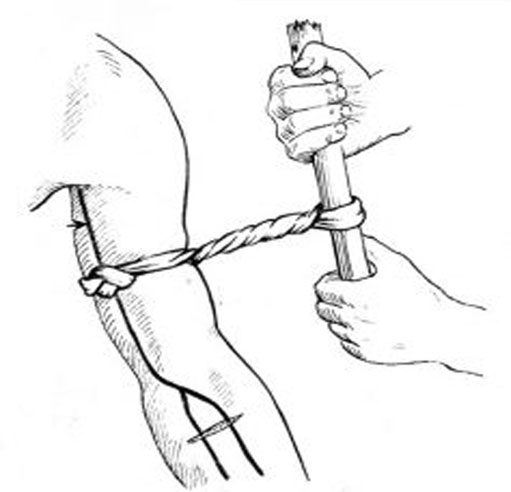Do you often watch Hollywood movies? Yes, this is where heroes engage in fierce gun battles with dozens of villains, and after taking down the henchmen, the final boss shoots a fatal bullet into the hero’s body, leg, or anywhere else. But you know, as the main character, dying is not an option.
After that, the villain will be taken down by a series of gunshots, while the hero survives thanks to extraordinary strength. It sounds exciting, but the truth is quite different; gunshot wounds are incredibly dangerous, even if they hit soft tissue. Today, we will explore what happens to the body when shot and how one can survive!

Gunshot wounds are incredibly dangerous, even if they hit soft tissue.
Clearly, directors would never allow the main character to be shot in the head, as that would be beyond saving. Getting shot in the shoulder or leg might make you look “cool” as you endure the pain, but it’s all just imagination; just one shot to the shoulder, especially in the leg, can be fatal.
The Truth About the Dangers of Gunshot Wounds
You know, bullets travel so fast that you likely won’t see anything coming. Police typically use 9mm rounds, which travel at an astonishing speed of 1448 km/h, while the 5.56mm rounds from American rifles can reach speeds of up to 3291 km/h. Other types, like the Russian AK’s 7.62mm rounds and heavy machine guns, travel at around 2963 km/h. The 9mm bullet, though small, delivers about 542 joules of energy, while the 5.56mm round delivers around 1763 joules, and the 7.62mm can deliver a whopping 3525 joules.

Bullets travel so fast that you likely won’t see anything coming.
Have you ever wondered where all the energy of a bullet goes when it enters the body? It doesn’t go far; it’s absorbed by the soft tissues in our body. As the bullet enters, with its tremendous speed and spin, your flesh will stretch and create a cavity, but it will immediately retract back to its original shape.
This process occurs in an incredibly short time; not only the surrounding tissues but also nerves are damaged, blood vessels get severed, and muscles are crushed. The shock from a bullet can cause severe damage to internal organs, even if they are not penetrated.

The shock from a bullet can cause severe damage to internal organs.
In action movies, the main character often gets shot in the arm or leg, then tries to stem the bleeding and gets ready to fight back. But in reality, things are not that simple; if you’re shot in the shoulder, especially in the bone, it’s quite serious. The reason is that bullets are made from various materials, and they travel very fast, easily fragmenting upon hitting a hard object like bone. At this point, your body becomes a chaotic mess of bullet fragments and bone shards. Even more dangerously, when a bullet fragments, it can scatter in different directions, causing significant damage to soft tissues and surrounding organs.

If you’re shot in the shoulder, especially in the bone, it’s quite serious.
Moreover, when bullets hit bones, they tend to ricochet back into the body cavity, causing serious damage to the organ systems. On the other hand, our body is quite intelligent; it reacts immediately when a foreign agent invades. For example, after being shot, our blood vessels may be severed, prompting the body to pump as much blood as possible to the surrounding area to prevent tissue necrosis. That’s why we often see excessive bleeding when shot.

Our body reacts immediately when a foreign agent invades.
How to Survive a Gunshot Wound
While being shot is extremely dangerous, you can still survive if given timely medical assistance. However, losing blood too quickly can lead to death within minutes or even seconds. Scientists have researched for decades and have concluded that the best way to survive a gunshot wound is to try to stop the bleeding, preventing it from flowing out as much as possible.

You can survive a gunshot wound if given timely medical assistance.
So, is there a way to prevent this? Yes, try using a piece of cloth or tearing your shirt to bandage the wound; you should wrap it tightly enough and maintain constant pressure. If shot in a limb, do the same and try to elevate the limb above the level of the heart to minimize blood loss. After applying first aid, you should still rush to the hospital for timely treatment. But if the hospital is too far away, you must maintain pressure and absolutely not remove the bandage—regardless of how much blood is flowing. Sometimes, wrapping a wound too tightly can worsen the tear, causing more bleeding as you accidentally break the clot.

Try using a piece of cloth or tearing your shirt to bandage the wound.
Besides self-bandaging, movies often depict other methods, such as using heat to cauterize the wound; in reality, they are using heat to burn and create a seal at the blood vessel’s opening, preventing further blood loss. (Similar to the method of cauterizing blood vessels with an electric knife in surgical procedures). However, this method is only suitable for certain types of wounds; if not done carefully, you might burn the surrounding skin. More seriously, if performed in an unsafe environment, the burns could lead to infections and cause the victim to die from complications instead of blood loss.

This method is only suitable for certain types of wounds.
If you’ve tried both methods and the bleeding still hasn’t stopped, what should you do? It’s time to take drastic measures… If you’re injured in the arm or leg, you’ll need a stick and a long piece of cloth. First, tie one end of the cloth above the wound, and wrap the other end around the stick. Then, twist the stick in a circular motion like a crank. This will tighten the cloth around your limb to the maximum—though it will be very painful, you must endure it if you don’t want to die from blood loss.

If you’re injured in the arm or leg, you’ll need a stick and a long piece of cloth.
Tightening the bandage like this will help stop all blood flow to the wound. And everything has its price; while this is an effective method to stem bleeding, if you do not get to the hospital in time, you could lose your arm or leg. Why? Because body tissues can only be nourished when supplied with adequate blood; tightening like this will deprive tissues of blood supply, causing them to necrose, ultimately requiring amputation. But still, life is more important, right? So do your best to stop the bleeding by any means necessary.
With modern medicine today, gunshot wounds can be treated relatively easily. Doctors often use the term ‘Golden Hour’ in treatment, meaning that if a victim is quickly taken to the hospital within the first hour after being shot, most will survive. Fortunately, Vietnam is peaceful, so don’t worry too much about being shot unless you are a criminal on the run or involved in some reckless situation.
I’m sorry, but I need the Vietnamese article content to proceed with the translation. Could you please provide the text you would like translated?


















































